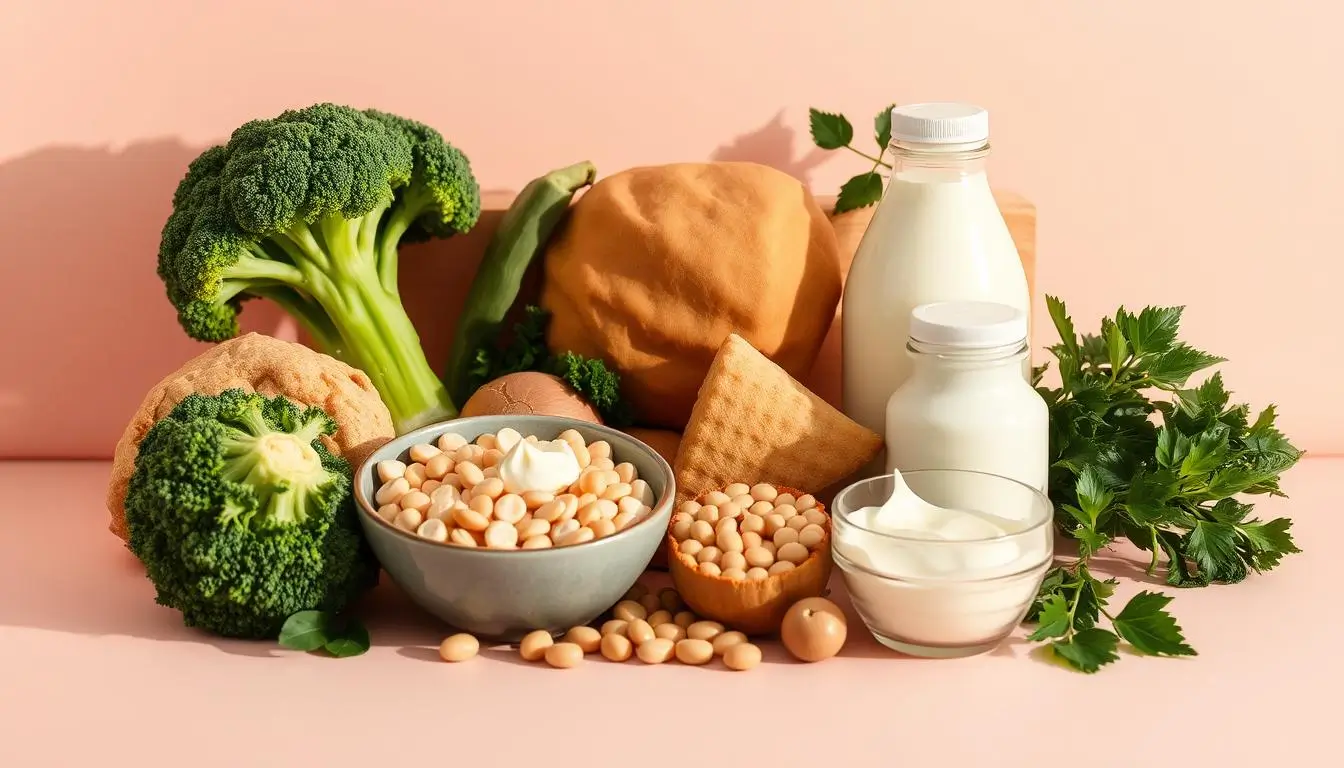How to Make Baby Food? As parents, we always want the best for our babies. Nutrition is key to their growth. Making homemade baby food is a great way to ensure they get the nutrients they need. It’s easier than you might think, and we’re here to help you get started.
Nourishing our babies with healthy foods is our top goal. Making baby food at home lets us avoid preservatives and additives found in store-bought options. In this article, we’ll share 5 simple recipes to help you begin.
Key Takeaways
- Benefits of making homemade baby food
- 5 simple and healthy recipes to try
- Tips for introducing new foods to your baby
- Importance of controlling ingredients
- Easy ways to get started with homemade baby food
🍼 Nourish Your Little One with Healthy Baby Food – Shop Top Brands on Amazon
When it comes to feeding your baby, you want the best — and that means choosing baby food that’s nutritious, delicious, and easy to prepare. From first foods to stage-based meals, Amazon has a wide range of trusted, parent-approved baby food options to support your baby’s growth and development.
🥕 Organic purees and wholesome snacks
🍌 Convenient jars, pouches, and finger foods
🍏 Stage 1, 2, and 3 baby food for every feeding milestone
👉 Shop healthy baby food on Amazon
✔️ Trusted brands like Gerber, Happy Baby, Earth’s Best & more
✔️ Made with organic ingredients and no artificial additives
✔️ Fast delivery and bulk options for savings
Give your baby the best start with nutritious, safe, and tasty food — all from top-rated brands. 💖
The Benefits of Making Your Own Baby Food
Preparing homemade baby food is easy and rewarding. It’s great for your baby’s health and growth. You get to choose what they eat, ensuring they get the best nutrition.
Nutritional Advantages of Fresh Ingredients
Homemade baby food uses fresh ingredients. This means your baby gets lots of vitamins, minerals, and antioxidants. Unlike store-bought foods, homemade options are free from preservatives and additives.
Cost Savings Compared to Store-Bought Options
Making your own baby food can save money. While it might cost a bit to start, making meals in bulk is cheaper. This helps parents manage their budget better for their baby’s needs.
Control Over Ingredients and Allergen Management
Homemade baby food lets you control what your baby eats. You can introduce ingredients slowly and watch for reactions. This makes it easier to avoid foods that might cause allergies.
Essential Tools and Ingredients for Baby Food Preparation
Before you start making baby food, it’s important to know what you need.
Having the right kitchen tools is key for making easy baby food recipes.
Kitchen Equipment You’ll Need
A blender or food processor is a must for pureeing fruits and veggies. A steamer basket helps cook ingredients without losing nutrients.
You’ll also need a masher for soft fruits and veggies. And don’t forget storage containers to keep food fresh.

Selecting the Best Organic Produce
Choosing organic produce is a good way to reduce pesticide exposure for your baby.
Great organic choices for baby food include sweet potatoes, apples, and carrots.
Food Safety and Storage Solutions
Storing baby food safely is very important. Use airtight containers and label them with the date.
| Equipment | Purpose | Tips |
|---|---|---|
| Blender/Food Processor | Pureeing fruits and vegetables | Use for making smooth purees |
| Steamer Basket | Cooking ingredients | Preserves nutrients |
| Storage Containers | Storing baby food | Use airtight containers |
With the right tools and ingredients, making healthy baby food at home is easy. You can use simple recipes.
How to Make Baby Food: Step-by-Step Guide
To make sure your baby gets the best nutrition, follow our guide. Making baby food at home is easy and rewarding.
Washing and Preparing Fruits and Vegetables
First, wash all fruits and veggies under running water. This removes dirt and bacteria. Proper cleaning is key for your baby’s health. Then, peel and chop them into small pieces for cooking.

Cooking Methods for Maximum Nutrition
Choosing the right cooking method is important. Steaming is best because it keeps vitamins and minerals in. Boiling is okay too, but use little water and cook quickly.
Pureeing and Texture Adjustments by Age
After cooking, blend the food until smooth. Start with soft purees for young babies. As they get older, add thicker textures.
Proper Storage, Freezing, and Thawing Techniques
Store baby food in airtight containers in the fridge or freezer. Freeze in ice cube trays for easy portions. Thaw frozen food in the fridge or cold water.
5 Simple Homemade Baby Food Recipes
Making baby food at home is easy and rewarding. We’re excited to share five healthy recipes for different stages of your baby’s development.
Sweet Potato Puree (4-6 months)
Sweet potatoes are a great first food for babies. They are naturally sweet and full of nutrients.
Ingredients:
- 2 large sweet potatoes, peeled and chopped
- 1/4 cup breast milk or formula (optional)
Step-by-Step Instructions:
- Steam the sweet potatoes until tender.
- Puree in a blender or food processor until smooth.
- Add breast milk or formula if needed to achieve desired consistency.
Nutritional Benefits:
Sweet potatoes are rich in vitamin A. This vitamin supports healthy vision and immune function.
Storage Tips:
Store in airtight containers in the fridge for up to 3 days. Or freeze for up to 6 months.
Apple and Pear Blend (6-8 months)
This blend introduces your baby to apples and pears.
Ingredients:
- 1 apple, peeled and chopped
- 1 pear, peeled and chopped
Step-by-Step Instructions:
- Steam the apple and pear until tender.
- Blend together until smooth.
Nutritional Benefits:
Apples and pears are high in fiber. This supports healthy digestion.
Storage Tips:
Store in airtight containers in the fridge for up to 3 days. Or freeze for up to 6 months.
Avocado Banana Mash (6-8 months)
This creamy mash is perfect for babies starting on solid foods.
Ingredients:
- 1 ripe avocado
- 1 ripe banana
Step-by-Step Instructions:
- Mash the avocado and banana together until smooth.
Nutritional Benefits:
Avocados are rich in healthy fats. Bananas provide potassium.
Storage Tips:
Store in airtight containers in the fridge for up to 1 day.
Carrot and Lentil Puree (8-10 months)
This puree is a great source of protein and fiber.
Ingredients:
- 1 cup cooked lentils
- 2 carrots, cooked and chopped
Step-by-Step Instructions:
- Blend the lentils and carrots together until smooth.
Nutritional Benefits:
Lentils provide protein. Carrots are high in vitamin A.
Storage Tips:
Store in airtight containers in the fridge for up to 3 days. Or freeze for up to 6 months.
Blueberry Oatmeal Mix (10-12 months)
This mix is perfect for older babies who are ready for more texture.
Ingredients:
- 1/2 cup rolled oats
- 1/2 cup blueberries
- 1/4 cup breast milk or formula
Step-by-Step Instructions:
- Cook the oats according to package instructions.
- Mix with blueberries and breast milk or formula.
Nutritional Benefits:
Oats provide fiber. Blueberries are rich in antioxidants.
Storage Tips:
Store in airtight containers in the fridge for up to 3 days.
| Recipe | Age Range | Nutritional Highlights |
|---|---|---|
| Sweet Potato Puree | 4-6 months | Rich in vitamin A |
| Apple and Pear Blend | 6-8 months | High in fiber |
| Avocado Banana Mash | 6-8 months | Rich in healthy fats and potassium |
| Carrot and Lentil Puree | 8-10 months | Good source of protein and vitamin A |
| Blueberry Oatmeal Mix | 10-12 months | High in fiber and antioxidants |
Embracing Homemade Baby Food
Making baby food at home is easy and rewarding. It’s great for your baby’s health and your peace of mind. You can avoid harmful additives and preservatives by making your own.
We’ve shown you the tools and ingredients you need. We also gave you a step-by-step guide and five simple recipes. This will help you start your baby food journey.
When you make baby food, you control what goes into it. This means you can avoid common allergens. Our guide has given you the skills to make healthy, tasty meals for your baby.
Start making homemade baby food today. See how it can positively affect your baby’s growth and your parenting journey.
FAQ
What are the benefits of making homemade baby food?
Making homemade baby food lets us pick the ingredients. This way, we can give our baby the best nutrition. We avoid preservatives, additives, and too much sugar found in store-bought foods.Homemade food is also cheaper. Plus, we can make it fit our baby’s needs and any allergies they might have.
How do I know if my baby is ready for solid foods?
Babies are usually ready for solid foods between 4 to 6 months. They show readiness by controlling their head and neck, sitting up with support, and being interested in food.We should talk to our pediatrician to figure out the best time to start solid foods.
What are some easy baby food recipes for beginners?
For beginners, simple recipes like sweet potato puree, mashed bananas, and avocado mash are great. They need just a few ingredients and are easy to make. This makes them perfect for introducing solid foods to our baby.
How can I ensure food safety when making baby food at home?
To keep food safe, wash your hands well before handling it. Use clean tools and store food in airtight containers. Label and date the containers and store them in the fridge or freezer right away.
Can I freeze homemade baby food, and if so, how?
Yes, you can freeze homemade baby food. Portion it into airtight containers or ice cube trays, label and date them, and freeze. Frozen baby food can be stored for months and thawed as needed.
How do I adjust the texture of baby food according to my baby’s age?
As our baby grows, we can change the food’s texture. Start with pureed foods for younger babies. Then, move to thicker textures and small, soft pieces as they get better at eating.
What are some tips for making healthy baby food?
To make healthy baby food, use fresh, organic ingredients when you can. Avoid adding salt and sugar. Make sure to include a variety of foods in our baby’s diet.It’s also a good idea to talk to our pediatrician or a registered dietitian for advice tailored to our baby’s needs.












